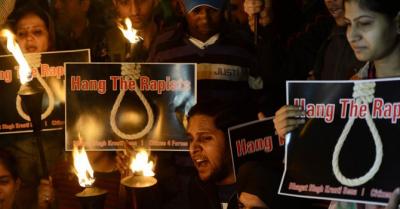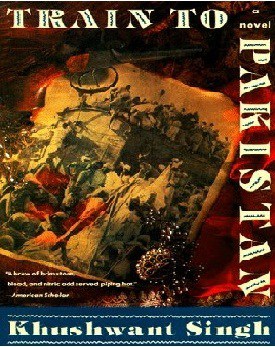 Low and behold! The iphone 5 is finally here, a device that’s thinner, lighter, faster and taller than its predecessor.
Low and behold! The iphone 5 is finally here, a device that’s thinner, lighter, faster and taller than its predecessor.
“This is the biggest thing to happen to iPhone since the iPhone,” said Apple marketing chief Phil Schiller. But is it really worth a buy? Let’s find out.
Firstly here are some significant and interesting features worth noting:
- Taller, thinner, and a metal back
The iPhone 5 features a 4-inch display (i.e. it’s larger than the iPhone 4S) and an aluminum and glass body that weighs 112 g and is 7.6 mm thick, making it 20 percent lighter and 18 percent thinner than the iPhone 4S. Touch sensors are now built into the display itself, which makes it 30 percent thinner as a result and less prone to glare.
The phones will be two toned, coming in either black and slate or white and silver. Apple iPhone 4S was given a glass back which got cracked by accidental falls frequently. Fortunately Apple has learnt their lesson from iPhone 4S and has provided a metal back this time, which is sure to play in their favor as far as durability of the body is concerned.
You won’t have to scroll that much because the larger screen will allow a fifth row of icons .On the down side most of the applications you have will not utilize all the space on the screen and will show black borders on the top and bottom of the application. The fate of this extra space will be decided by the application developers, whether to provide the customers with a better application experience or exploit the space by advertisements.
2. LTE (Long Term Evolution) and carriers
The iPhone 5 will run on 4G LTE networks. That’s in addition to the current support for GPRS, EDGE, EV-DO, and HSPA data networks. iPhone 5 has an inbuilt dynamic antenna which allows you to switch among these networks smoothly. The 4G connection will double the speed internet browsing and downloading content.
Taking in account the Indian disputes over 3G, it might take some time before the 4G internet service is started in India. In the absence of a suitable 4G connection the network will run on 3G connection and HSPA data network
3. A faster chip (A6 Chip)
The iPhone 5 is also powered by a faster A6 processor. According to Apple’s specialists, users will see Web pages load 2.1 times faster, and the Music app with songs will load 1.9 times faster. Combining both the 4G LTE and A6 chip the entire iPhone’s operating speed and internet speed is bound to impress many iphone4S users.
4. Battery life and Audio
Phone calls (the reason we bought phones for once upon a time) will be better and have three microphones and a noise-canceling earpiece, in addition to Apple’s new “wideband” audio that promises to deliver more natural sounding voice. Apple claims a longer batter backup with 8 hours of 3G talk time, 8 hours of 3G browsing, 8 hours of LTE browsing, 10 hours of Wi-Fi browsing, 10 hours of video playback, 40 hours of music playback, and 225 hours of standby time.
5. Camera
It comes with a spiffier camera, front and back facing cameras have each been upgraded (they’ll be 720p and 1080p, respectively) and users will be able to take much larger photos thanks to the new Panorama feature. There also a new image signaling mechanism within the A6 chip, which will bring spatial noise reduction and a “smart filter” that, produces better low-light performance and captures photos faster. Finally, there’s a built-in panorama mode that stitches shots together for one large 28-megapixel photo.
6. Lightning Power connector
The traditional 30-pin power connector has been replaced with much smaller one called Lightning is in. According to Apple, lightning is only 20 percent the size of the previous one. That means your iPod and iPad chargers won’t be charging your phone anymore. The various audio partners of apple which include BOSE will be coming up with new devices which will be compatible with the new connector.
Pricing for the different configurations is as follows: $199 for 16GB, $299 for 32GB, $399 for 64GB. It will be launched in India at sometime in early November this year. Also, note that the price of the iPhone 5 16 GB is same as the price of iPhone 4S 16 GB .For those who were hoping to buy a buy an iPhone 4S should definitely wait for the launch of iPhone 5 in India .
The Verdict: Should you buy it ?
Yes, the iPhone5 is definitely worth buying but unfortunately without a decent 4G connection it will not be performing at its maximum potential. The new design will adversely affect the view of the old applications and upcoming applications which should be solved in a few months. But the increase in battery life and the A6 chip alone make this iPhone a must buy.
Pinakita Gupta & Arjun Khosla
[email protected] ; [email protected]









 India’s 2011 tour of England was quite a chastening experience for Dhoni’s men. India failed to register even a single victory, losing the 4-match test series, the 5-match ODI series and the 1-match T-20 series 4-0, 3-0 and 1-0 respectively. It’s hardly surprising then that England’s tour of India is being billed as the ‘revenge’ series. The 3 month long tour includes 4 test matches, 2 T-20 matches and 5 ODI matches.
India’s 2011 tour of England was quite a chastening experience for Dhoni’s men. India failed to register even a single victory, losing the 4-match test series, the 5-match ODI series and the 1-match T-20 series 4-0, 3-0 and 1-0 respectively. It’s hardly surprising then that England’s tour of India is being billed as the ‘revenge’ series. The 3 month long tour includes 4 test matches, 2 T-20 matches and 5 ODI matches.
 1) The Satanic Verses
1) The Satanic Verses
 5) The Polyester Prince
5) The Polyester Prince Low and behold! The iphone 5 is finally here, a device that’s thinner, lighter, faster and taller than its predecessor.
Low and behold! The iphone 5 is finally here, a device that’s thinner, lighter, faster and taller than its predecessor.